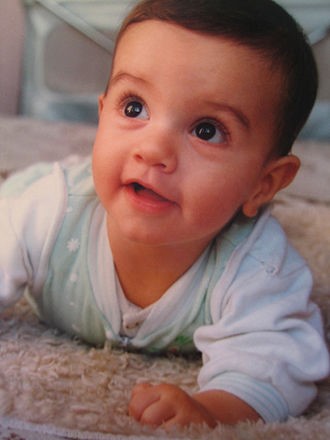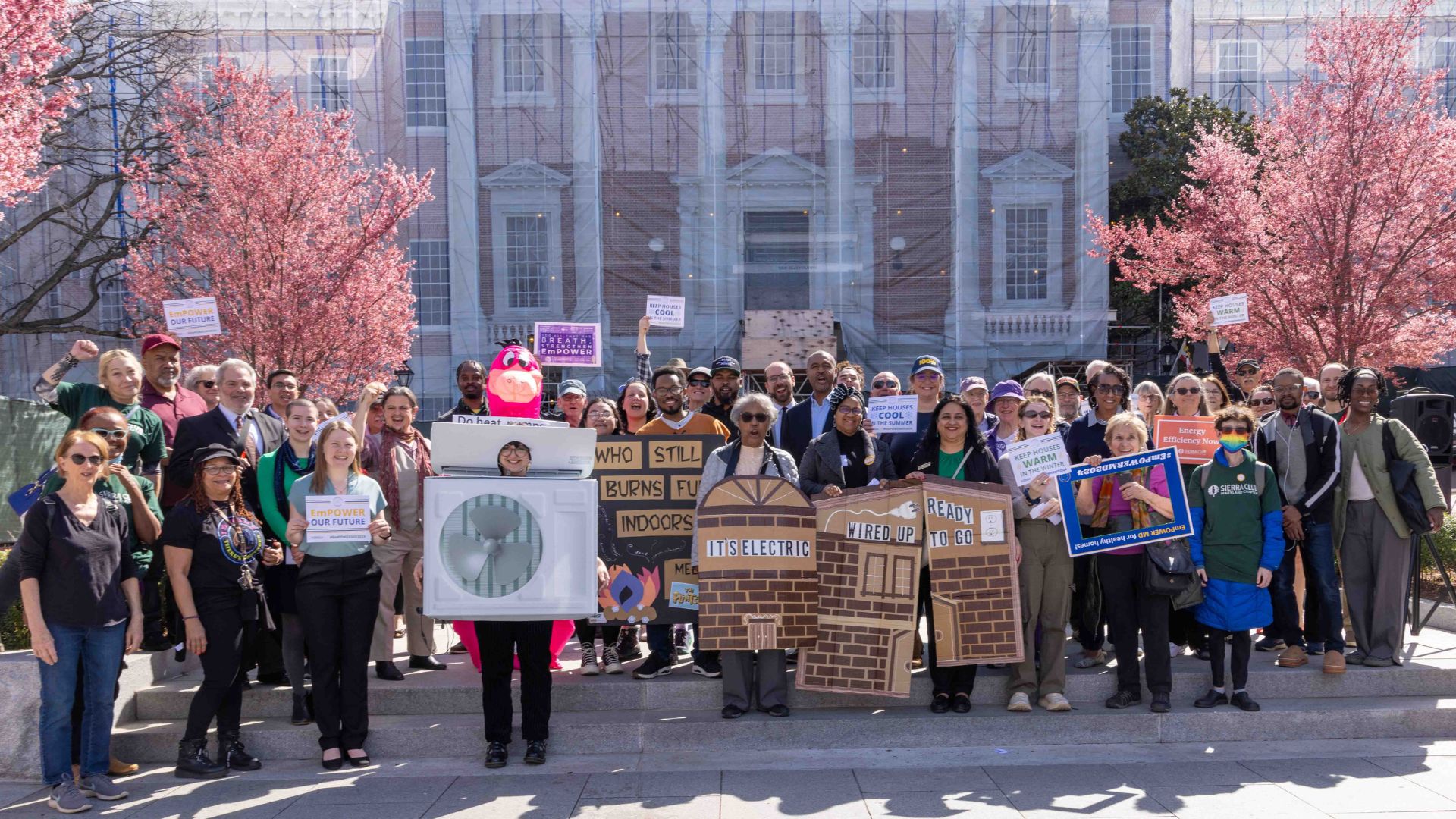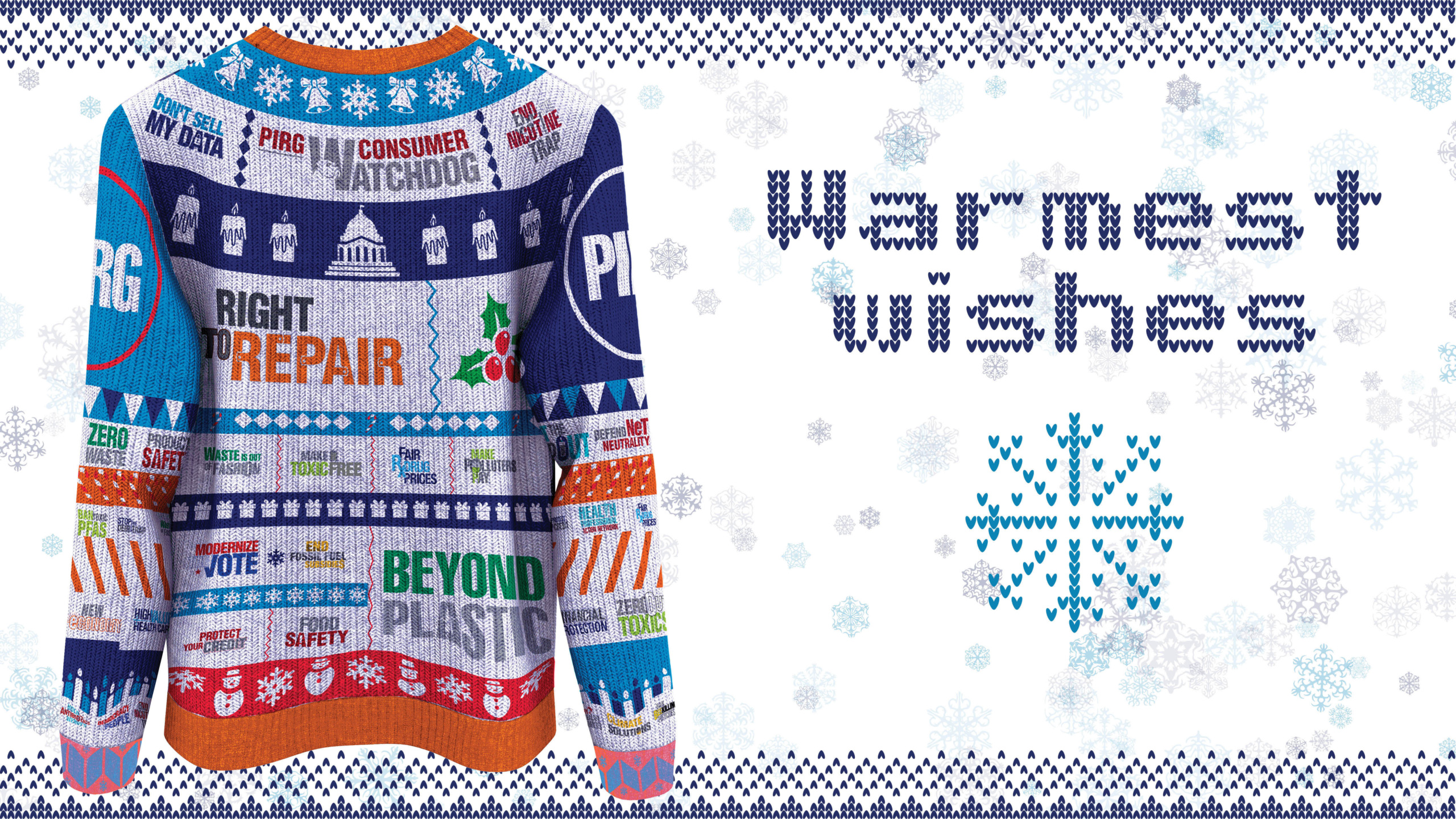HOUSE LEGISLATORS CONSIDER BILL PROMOTING NON-TOXIC CLEANERS IN DAYCARE CENTERS
When Maryland passed legislation promoting green cleaning in public schools, we were in good company: 11 other states passed similar measures to protect our school kids. Unfortunately, our youngest and most vulnerable children are still lacking chemical protections.

When Maryland passed legislation promoting green cleaning in public schools, we were in good company: 11 other states passed similar measures to protect our school kids. Unfortunately, our youngest and most vulnerable children are still lacking chemical protections.
Of the 400 distinct chemicals found in cleaning supplies commonly used in schools, substances such as formaldehyde, arsenic, and others are especially dangerous. Exposure to even low levels of these toxic chemicals has been linked to devastating developmental and reproductive health hazards, including childhood cancers, ADD, and asthma.
Delegate Angela Angel has had enough. The lawmaker from Prince George’s County wants childcare centers and large childcare homes to replace toxic cleaning supplies with ‘green’ cleaners. These non-toxic alternatives are affordable, affordable, and just as effective as conventional products.
Together, we can keep our learning environments safer for children, for childcare providers, and for everyone downstream. Here is our written testimony for the Committee hearing this month:
Health and Government Operations Committee: March 7, 2016
HB 1391 Family Child Care Homes and Child Care Centers – Green Product Cleaning Supplies–Regulations
Position: Favorable
Maryland PIRG is a statewide, non-partisan, non-profit advocacy group that takes on powerful interests, working to win concrete results for our health and well-being on behalf of thousands of members across the state.
We would like to thank the members of this committee and the Maryland General Assembly for your leadership in passing legislation to establish green cleaning in Maryland public schools. Additional legislation has been passed to restrict toxic chemicals from consumer products, including bans on cadmium, lead, TCEP and TDCPP (part of the TRIS flame retardant family) in children’s products; the toxic flame retardant deca-BDE in household products; and bisphenol-A in baby bottles and infant formula containers. HB 1391 is an opportunity to extend these safety measures to daycare facilities, where our youngest and most vulnerable children grow and learn, without causing harm to local business. It is our duty to keep our children safe and protect our environment.
As Marylanders, we all care about the health and well-being of our children. Further, we expect our schools and daycare facilities to be safe places for learning and development. Unfortunately, children and maintenance staff are at risk because of the cleaning products and practices used routinely in these facilities.
There are close to 100,000 chemicals on the market today, and many of them present well-known health hazards: Science tells us that formaldehyde can cause cancer and asthma, for example, just as arsenic has been shown to cause ADD and autism. What many people do not know, however, is that these chemicals and more are often found in the household products we use every day, such as conventional cleaning supplies. The cumulative exposure to even low levels of toxic chemicals can cause health defects in adults and especially in children, who are most susceptible because of their fragile “window of vulnerability.” The very products that are meant to keep us clean and safe instead expose us to toxicity.
We are not alone in our fight against toxics. Several other states recently strengthened their commitment to child health: In the past decade, New York, Illinois, Missouri, Connecticut, Hawaii, and others enacted laws encouraging or requiring the use of greener cleaning supplies in schools, while others have taken strides toward regulating cleaning practices in child care centers. For example, Rhode Island regulations require that child care centers follow standards for cleaning products and procedures outlined in a health and safety guidance document. Additionally, a 2014 Minnesota law requires cleaning solutions used to disinfect diapering surfaces to be free of the dangerous chemical triclosan, or derivatives thereof.
We all want our living and learning environments to be clean. That is why we use surface and window cleaners, floor finishes, laundry detergents, hand soaps, and more. However, after testing the cleaning products used in schools in 2009, the Environmental Working Group found that typical products used by janitors contained over 400 distinct chemicals, many of which have been linked to serious illnesses and development delays in children. Further, the chemical ingredients in these cleaning supplies are often not labeled, making it difficult for administrators to choose safer products. “It is hard to find safer products because manufacturers of cleaning products don’t have to test their products to make sure they are safe for people and the environment,” reads the green cleaning toolkit published by the Center for Environmental Research and Children’s Health. As a result, the air quality in 20% of schools was rated ‘unsatisfactory’ due to the use of toxic cleaning supplies.
The surfaces our children touch and the air they breathe have all been ‘cleaned’ with toxic chemicals. Increasing incidence of childhood cancers, including leukemia and non-Hodgkin’s lymphoma, as well as increasing rates of infertility, have both been linked to exposure to toxic chemicals. Frighteningly, chronic lung disease asthma is the most common disease affecting children in Maryland, and rates of asthma continue to rise. As of 2010, 16.4% of children in Maryland were reported to have suffered from asthma, compared to a national rate of 12.6%. In the United States as a whole, the prevalence of children with asthma has more than doubled since 1980. With 30 million adults and 10 million children in the U.S. suffering from asthma – some of whom report missing school because of their condition – we cannot afford to continue the use of these toxic chemicals to clean our learning environments.
The level of toxicity can seem overwhelming, but safer alternatives are commercially available, equally effective, and considerably safer: On average, ‘green’ cleaning products contain only one-fourth as many dangerous chemicals as conventional products. To help consumers make healthy choices, leading green certifications establish health standards for a variety of products, including general purpose and restroom cleaners used in schools and institutions. Periodically-revised standards established by the EPA, for example, prohibit carcinogens and asthmagens, as well as skin and inhalation toxicity in products, with a focus on children’s special susceptibility.
With healthier options available, we now need regulations to assure the regular use of green cleaning in each child’s environment. HB 1391 requires our State Department of Education to set green cleaning standards for large family child care homes and child care centers, while thoughtfully allowing exemptions for facilities that face economic or practical barriers to implementing green cleaning techniques. The goal of HB 1391 is to work with the Department of Education and child care facilities to move towards safer options as quickly as possible.
We know that toxic chemicals in our cleaning products pose a health risk to children and to child care providers, while also threatening the health of our food and water supplies downstream. Together, we can green our learning environments and keep everyone safer and healthier. The Maryland Public Interest Research Group strongly recommends a favorable report for HB 1391.
Thank you.
Enclosures
Appendix 1
Toxic Chemicals in Cleaning Products Threaten Our Health
Most commercial chemicals are introduced to the market without adequate scrutiny of their health and environmental impacts or consideration of safer alternatives. Decades of scientific research demonstrate that chemical exposures can have serious health effects, such as asthma, cancer, developmental and reproductive disorders, and other chronic diseases.
Asthma
More than 30 million adults (12 percent) and more than 10 million children (14 percent) in the United States have been diagnosed with asthma at some point in their lives. Asthma has been linked to a variety of chemical exposures in the everyday environment, from smog in city air to toxins released from cleaning products. In Maryland, asthma contributes to school absenteeism. Among parents of school-aged children with asthma, 16.8% reported that their child missed 1-2 days of school because of asthma during the past 12 months, and 5.7% said their child missed 8-29 days due to asthma (DHMH).Six chemicals known to cause asthma (formaldehyde, styrene, methyl methacrylate, ethanolamine, alkyl dimethyl benzyl ammonium chloride, and didecyl dimethyl benzyl ammonium chloride) were present in cleaning products used in schools that EWG tested.
Cleaning products also contribute to asthma indirectly, by releasing a host of volatile organic compounds (VOCs) that form ozone when in the presence of other widely distributed air contaminants composed of nitrogen and oxygen. Ozone is the primary component of smog that can trigger asthma. Ozone was not detected in this study because the VOCs emitted by cleaning products were exposed to purified air free of nitrogen-oxygen air contaminants. These common contaminants affect the air in classrooms across the U.S., providing an opportunity for ozone formation during and after use of cleaning supplies that release VOCs. Use of cleaning products can release volatile organic compounds at levels up to 100 times higher than found outdoors; these levels can even exceed safety limits established for industrial settings (Nazaroff 2006).
Cancer
Increasing incidence of many childhood cancers, including leukemia, non-Hodgkin’s lymphoma, and specific brain and nervous system cancers (Woodruff 2004; Ries 2007), are a clear cause for concern regarding children’s exposures to chemicals linked to cancer. EWG air pollution tests of cleaning products used in schools, along with limited ingredient disclosure, revealed a total of 11 cleaning chemicals classified as known, probable, or possible human carcinogens. For example, Comet Disinfectant Powder Cleanser was found to release benzene, formaldehyde, chloroform, and three more cancer-causing chemicals.
An additional carcinogen, quartz, was not detected by testing, but is disclosed as an ingredient by the manufacturer. Quartz is an inhalation carcinogen. School children are unlikely to inhale quartz powder present in cleaning products, but custodians may experience more substantial exposures. The widely used graffiti remover Goof Off was found to emit ethylbenzene and 2-butoxyethanol, both linked to cancer.
Cleaning product ingredients can also be indirect sources of carcinogenic contamination. As described above, the known human carcinogen formaldehyde can form by mixing trace amounts of ozone in the air with terpenes, natural components of pine and citrus oil cleaners like Pine-Sol. Formaldehyde formation from terpenes is higher on smoggy days when ozone levels are high.
Developmental Toxicity
The developing brain is particularly vulnerable to disruptions that lead to disorders such as autism, attention deficit disorder, mental retardation and cerebral palsy. Industrial chemicals, including lead, methylmercury, PCBs, arsenic and toluene, are known causes of these disorders. Although no comprehensive testing has been done, more than 200 additional chemicals are likely to interfere with early brain development (Safer by Design).
Disorders of brain development can range in severity from severe mental retardation to more subtle problems such as attention deficit disorder. Small deficits in brain development could even result in simply the loss of a few IQ points – which could be hardly noticeable on an individual level, but have large consequences across society as a whole. The causes of these disorders are mostly unknown, but scientists are accumulating evidence that chemical exposures can interfere with the process of brain development in ways that produce functional deficits. Scientists have identified more than 200 chemicals as possible factors in neurological disorders in humans, and more than 1,000 such chemicals in laboratory animals (Safer by Design).
A number of chemicals that incorporate chlorine are toxic to the brain and nervous system. Xylene is a neurotoxic component of certain heavy duty cleaning supplies, like Goof Off Cleaner (CA VOC Compliant) and Shineline Seal Floor Sealer/Finish, which are in use in California schools. Toluene and chloroform, both emitted by Comet Disinfectant Powder Cleanser, are also neurotoxic chemicals. Fragrances used in many cleaning products can contain ingredients suspected of neurotoxicity as well (USHR 1986). Other neurotoxins commonly used in cleaning products are benzyl and isopropyl alcohol, detected in NABC Non-Acid Disinfectant Bathroom Cleaner, Waxie 21 Glass Cleaner, and Ripsaw; isopropyl alcohol is also a known ingredient of Pine-Sol Original Cleaner. Although limits have been set for these chemicals in food, no limits are in place for cleaners.
Reproductive Toxicity
Each year, about 7.3 million American couples have trouble becoming pregnant or carrying to full term, an increase of 20 percent over the last 10 years (Barrett 2006). Alarmingly, infertility is rising most rapidly for women under age 25. Increasing evidence indicates everyday exposures to reproductive toxins may play a role in escalating levels of infertility in the U.S.
Conventional cleaning supplies can contain a number of reproductive toxins. Phthalates, common ingredients in cleaner fragrances and in some floor finishes and window cleaners (WVE 2007) are reproductive toxins according to a number of animal studies (CERHR 2000; OEHHA 2007). In addition, epidemiological studies link a number of reproductive effects to phthalate exposure, including male reproductive system abnormalities (Swan 2005), altered sex hormone levels in baby boys and men (Main 2006; Duty 2005), and sperm damage in men (Duty 2003, 2004; Hauser 2007). Dibutyl phthalate is an ingredient in Shineline Seal Floor Sealer/Finish, one of the products examined in this study. While phthalates may be present in other cleaning products tested, especially as components of fragrance, these chemicals are not sufficiently volatile to be measured as air contaminants. Instead, phthalates released by cleaners are likely to contaminate dust (Rudel 2003; CDC 2005).
Exposures to toxins in dust are significant especially for younger children who are more likely to spend time sitting or playing on the floor (Butte 2002). According to the manufacturer, Shineline Seal Floor Seal/Finish contains up to five percent dibutyl phthalate, an alarmingly high level considering the potential this creates for children’s exposure to a known reproductive toxin.
Other cleaner chemicals are linked to reproductive harm. Glycol ethers, including the widely used 2-butoxyethanol, are common cleaning solvents that impair fertility and harm development in animal studies (EPA 2000; NTP 2000). Other studies find that men exposed to glycol ethers on the job are more likely to have reduced sperm counts, while pregnant women exposed on the job are more likely to give birth to children with birth defects (Cordier 1997; CDHS 2007). 2-Butoxyethanol was detected in six conventional cleaning products by EWG (Simple Green Concentrated Cleaner/Degreaser/Deodorizer, Glance HC Glass and Multi-Surface Cleaner, Shineline Seal Floor Sealer/Finish, Goof Off Cleaner (CA VOC Compliant), Pioneer Super Cleaner, and Waxie 21 Glass Cleaner), and one certified green product (Waxie Green Floor Finish). Only five cleaning products (Citrus-Scrub 90, Comet Disinfectant Powder Cleanser, Glance NA Glass & Multi-Purpose Cleaner, Marauder Environmental Cleaner, and NABC Non-Acid Disinfectant Bathroom Cleaner) were found by EWG to be free of all glycol ethers examined by laboratory tests.
Quaternary ammonium compounds (quats) are antibacterial pesticides commonly used in disinfectants. A quat-based disinfectant called Virex, similar was recently identified by noted scientist Dr. Patricia Hunt as the cause of a severe decline in the fertility of a laboratory mouse population – preliminary evidence that quats may be reproductive toxins (Hunt 2008). Two disinfectants in the EWG study, NABC Non-Acid Disinfectant Bathroom Cleaner and Virex II 256, list quats as ingredients.
Hormone Disruption
Signs of hormone disruption are evident in girls growing up all over America. Over the last four decades, the age at which girls begin to develop breasts has declined by one-to-two years (Steingraber 2007), with African-American girls typically developing at an earlier age than Caucasian girls. Over the same 40-year period, the age at which girls in the U.S. begin menstruating has declined by a few months, with substantial variation by ethnicity (Steingraber 2007). Early breast development, as well as the appearance of pubic hair at a young age, has become so common that in 1999 the clinical definition of early-onset or precocious puberty in the U.S. was reduced from age 8 to age 7 for Caucasian girls, and from age 7 to age 6 for African-American girls (Kaplowitz 1999). A girl who begins puberty at an early age is at greater risk for several adult illnesses, including breast cancer (Wang 2005; Steingraber 2007; Golub 2008) and polycystic ovary syndrome (Ibáñez 1997; Kousta 2006; Steingraber 2007; Golub 2008), a leading cause of pelvic pain and infertility.
Scientists and medical professionals increasingly identify exposures to hormone-disrupting chemicals as a significant factor in unnaturally accelerating this critical period of development. Preliminary research on people suggests that exposures to one particular class of hormone disrupting chemicals, phthalates, may be linked to early puberty in girls (Colon 2000).
Eight of the hormone-disrupting chemicals identified by a key European Commission report (European Commission DG ENV 2000, 2007) were detected as air contaminants or disclosed as ingredients of nine cleaners tested by EWG. Shineline Seal Floor Sealer/Finish contained three different suspected hormone disruptors (styrene, ethylene glycol, dibutyl phthalate), and two such chemicals were found in Comet Disinfectant Powder Cleanser (1-chloro-2,3-epoxypropane, benzophenone), Simple Green Concentrated Cleaner/Degreaser/Deodorizer (phenol, ethylene glycol), and Goof Off Compliant) (benzophenone, N-Ndimethylformamide).
Appendix 2
Successful State Procurement of Safe Cleaning Supplies
11 states have passed laws guiding or regulating green cleaning in schools, including:
- Maryland’s 2012 Act Concerning County Boards of Education – Procurement of Green Product Cleaning Supplies requires the State’s elementary and secondary public schools to use cleaning products with positive environmental attributes. Local Boards of Education are responsible for defining what may be considered a green product.
- Connecticut’s 2009 Green Cleaning Products in Schools Act requires elementary and secondary public schools to use certified green cleaning and maintenance products, according to state guidelines.
- New York State’s 2005 Green Cleaning Act requires elementary and secondary schools to use green cleaning and maintenance products, under state guidelines.
- Illinois’ 2007 Green Cleaning Schools Act requires elementary and secondary schools to develop a green cleaning policy and purchase and use products consistent with state guidelines for green cleaning and maintenance products for schools. School districts that can prove that using green cleaners would pose a financial hardship may receive an exemption.
- Maine’s 2007 Policy to Encourage the Use of Safe Chemicals in Public Schools requires the State to publish information on green cleaning products and procedures, but does not mandate green cleaning in schools.
- Missouri’s 2008 Green Cleaning for Schools Act requires the State to publish information on green cleaning products and procedures, but does not mandate green cleaning in schools.
- Hawaii’s 2009 House Bill 1538, Relating to Environmentally-Sensitive Products, requires the Department of Education to give first preference for Green Seal certified green cleaning products for use in elementary and secondary public schools.
- Nevada’s 2009 Act Requiring School Districts to Use Certain Environmentally Sensitive Cleaning and Maintenance Products mandates that all public elementary and secondary schools ensure that only green cleaning and maintenance products are used to clean their floor surfaces. The State’s Department of Education is required to adopt regulations that define green products and provide districts with a list of approved products. School districts that can prove that using green cleaners would pose a financial hardship may receive an exemption.
- Several states have adopted safer cleaning regulations or guidelines for child care centers
- Alaska, Colorado, Idaho, New York, North Dakota, Pennsylvania, Rhode Island, and Wyoming require that cleaning materials used do not contaminate play surfaces, food, or food preparation areas or otherwise represent a health hazard to children
- Rhode Island regulations require that child care centers follow standards for cleaning products and procedures outlined in a third-party guidance document that emphasizes health and safety.
- In 2014, Minnesota required cleaning solutions used to disinfect diapering surfaces to be free of the dangerous chemical triclosan (or derivatives of triclosan).
- Vermont has banned the practice of diffusing airborne chemicals in day care centers that could be inhaled by children or adults (such as air fresheners).
- Indiana’s regulation require written policies in day care centers that address environmental exposures relating to disinfecting solutions.
Topics
Authors
Juliana Bilowich
Find Out More

2024 Maryland Legislative Session: Wins and Losses

Protecting Maryland Water from PFAS Pollution

PIRG’s warmest wishes for a safe and happy new year

